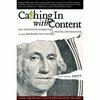Acquisitions in the blogosphere
Today it was announced that Weblogs, Inc. was acquired by AOL. Congratulations to Rafat Ali whose PaidContent.org broke the news yesterday during the We Media conference. Jason Calcanis' Weblogs, Inc. had quickly developed some very compelling content, most prominently Engadget, but also the Blackberry Hub, Blogging Baby, Autoblog and others. It's the same model that Primedia Enthusiast Magazines had used in the "traditional" publishing market; have compelling content geared towards niche markets of enthusiasts, written by enthusiasts. And here, it's proven to be just as compelling, but without the huge infrastructure required for a magazine publisher. It's rumored that the sale was in the $25M range, which seems a solid price for that property.
Of course, anyone involved in the NYC technology industry during the dot.com boom knows Jason. His Silicon Alley Reporter was must reading for anyone in the tech or content space. He later sold its successor to Wicks Business Information, which then sold to Dow Jones.
A day later, PaidContent also reports (via Jason Kottke) the rumors (yet unconfirmed) that Dave Winer's weblogs.com has been sold to Verisign. Weblogs.com was the first ping server. For those who don't blog, a ping server is the way that bloggers let the world know they've added a new post. While search engines spider and index content periodically, blogs are more like newsfeeds, so you need to ping the server to let all the search engines, RSS Readers and other tools know that you've added a new post.
What both of these transactions show is that the blogosphere is generating real value right now. This is not like the dot.com days where acquisitions or IPOs were based upon future potential, but instead are solid purchases based upon the traffic (and ad dollars) being generated right now.
Congratulations to Jason and Dave.
UPDATE: Michael Graves, of Verisign, confirms the Weblogs.com deal and explains the fit.







